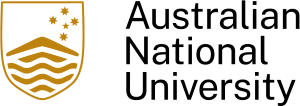Elena is uncovering the social perception of AI
For the past few months, Elena Denia, a Marie Skłodowska –Curie Fellow from the University of Valencia, has been at CPAS, furthering her research around the public's understanding of and relationship with AI.
Elena's diverse experience across three continents have all led to her ongoing work and career in science communication. She shared with CPAS all the different things she's learned, from studying astrophysics, to proper 'citizen science', to how a deepfake installation set her on her current research project.
How did you get your start as a science communicator?
My background originally is in astrophysics. Afterwards, I found an opportunity to do a PhD in STS and science communication, studying the social perception of science on Twitter.
I thought these fields were in parallel -- and I had had experience in public engagement activities, radio shows, these kind of things. All my experiences, together, just led to science communication as a field.
What started your interest in AI?
My work in Spain, I was focused on science communication on Twitter -- specifically, how to communicate astronomical content on Twitter, what kind of responses do we get from users, when do we get high engagement, what works. This was using qualitative research and mixed methods.
Were there any early outcomes in your work?
What I discovered is when you communicate in an emotional way, you get more comments and higher interactions from different parts in society. It led me to the idea that we need to humanise science -- that science is something built into society.
I then also worked for a while on a European project on inclusive sciences and European democracies. I produced a report to better the understanding of citizen science -- you can understand citizen science as engagement with scientific content, but it is also how people participate in debates and in decision making in scientific and technical issues.

Tell us about your time at the MIT museum
I got funding from the EU to go to MIT, which was really exciting. I was familiar with my supervisor John Durant's work, as I'd read a lot from him for my PhD. He was head of the MIT museum, where I became based.
The museum was completely new when I arrived. It was really exciting -- I got to be part of the opening three months after I got there.
At the museum, I became interested in an installation on AI and misinformation.
The installation was designed by two artists, who recreated the Apollo moon mission, simulating an alternate history where the contingent speech where the mission did not succeed was delivered instead. This was assembled with deepfake technology.
I was very attracted to this because of my background of astronomy, my experience with public engagement, and my growing interest in AI.
How did that lead to your particular interest in social perception of AI?
Regarding the installation, we conducted three FGDs on people's attitude on AI in general and deepfakes in particular.
We realize that people who are more engaged with technology also have a more positive view of it -- and that they actually, interesting, have more nuance. They are not naïve. They see problems related to AI, but they are more focused on creative solutions.
How did you come to us at CPAS?
It was part of the Marie Curie Fellowship to do at least a semester abroad.
My supervisor in the University of Valencia, Carolina Moreno, has a very good relationship with Fabien Medvecky. They are collaborating currently, the research team being called Science Flow.
I didn't have a clear idea of CPAS, but I did know that it was related to UNESCO, it had connections to the Australian government, and that CPAS has been involved in many activities in the science communication field. With "Australian National" in front, I knew CPAS does impactful work. I got here, and everyone was so familiar and friendly, and I'm happy to be here!
